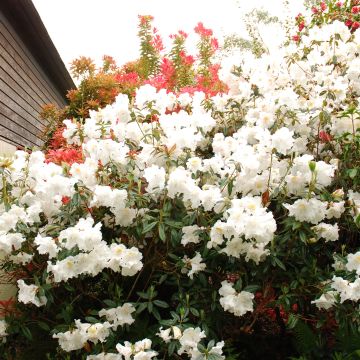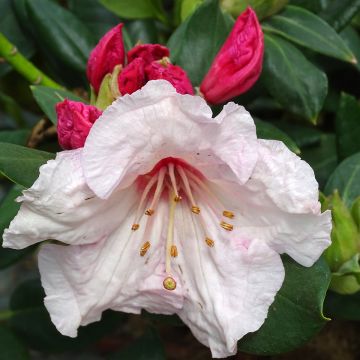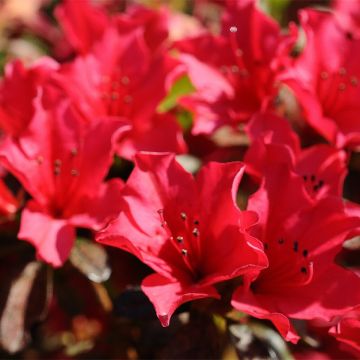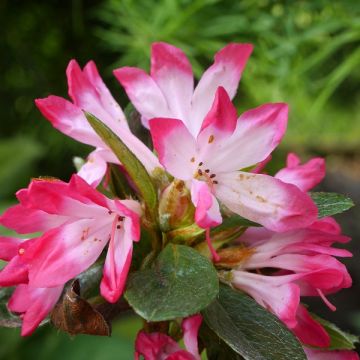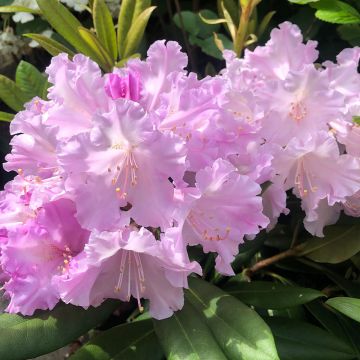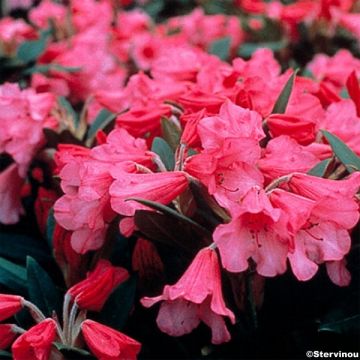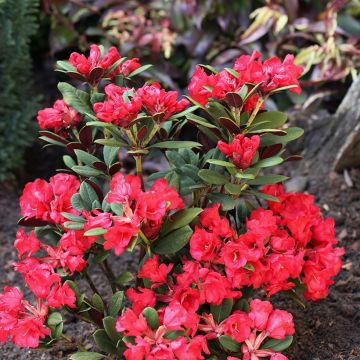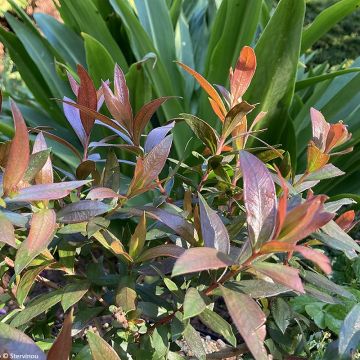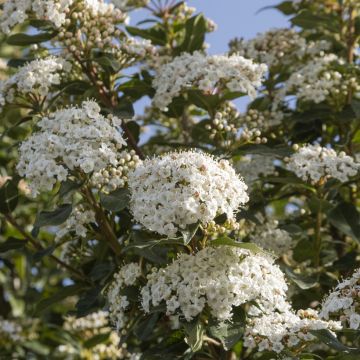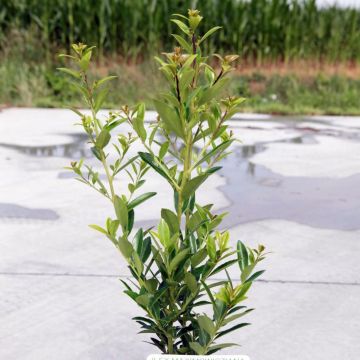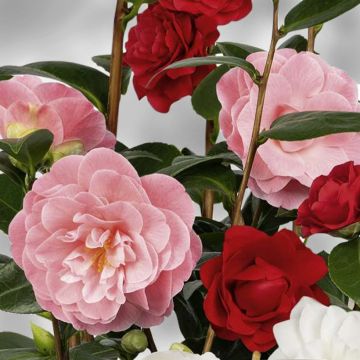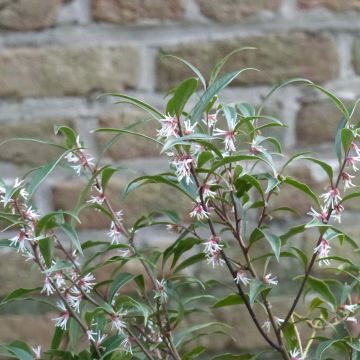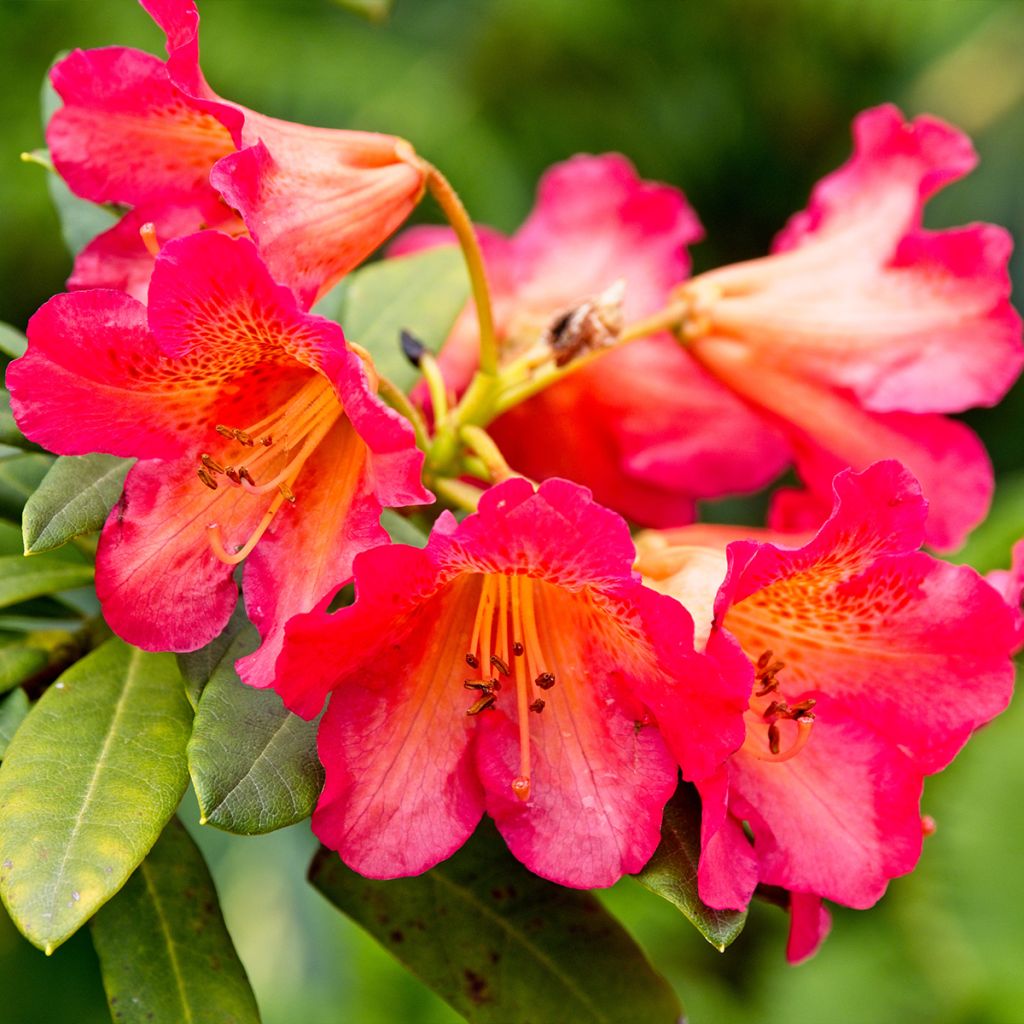

Rhododendron Scyphocalyx
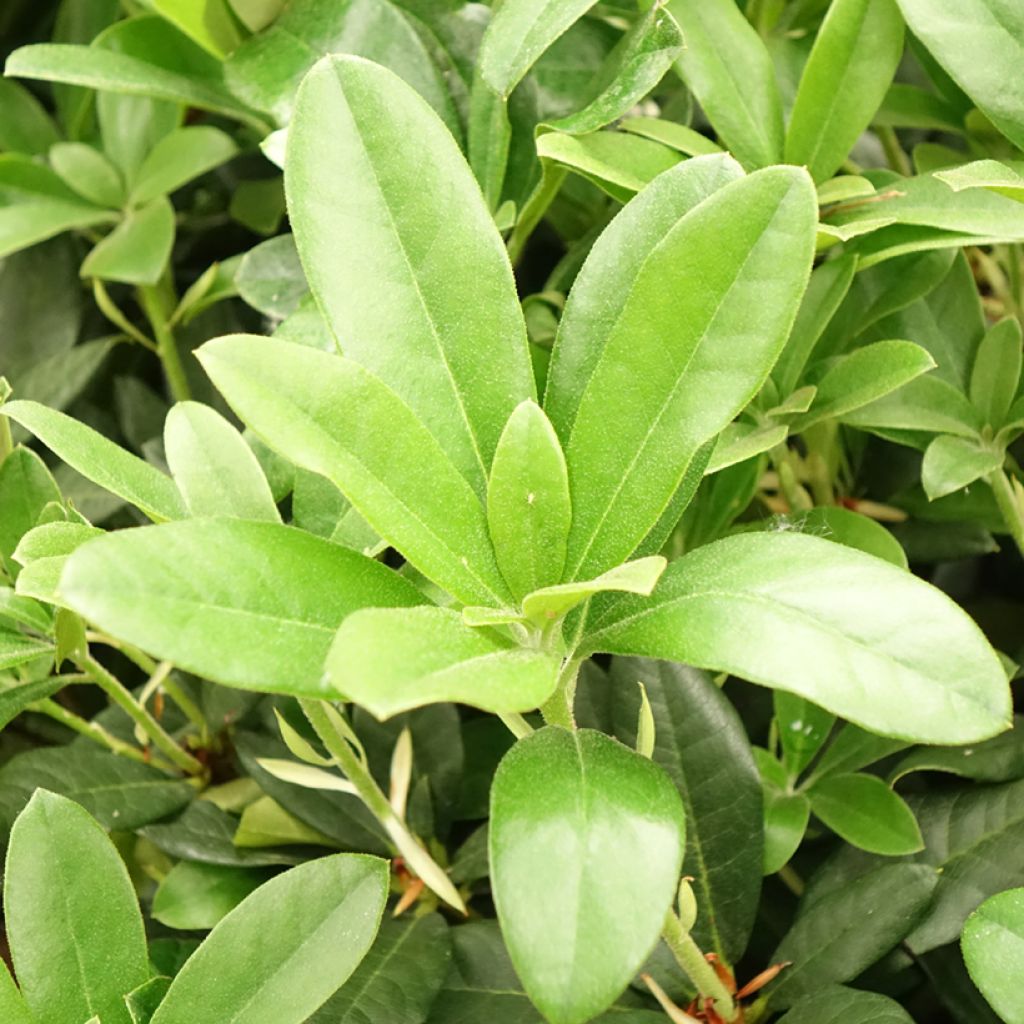

Rhododendron Scyphocalyx
Rhododendron Scyphocalyx
Rhododendron Scyphocalyx
Rhododendron
This item cannot be shipped to the selected country
Delivery charge from €5.90
More information
Schedule delivery date,
and select date in basket
This plant carries a 24 months recovery warranty
More information
We guarantee the quality of our plants for a full growing cycle, and will replace at our expense any plant that fails to recover under normal climatic and planting conditions.
From €5.90 for pickup delivery and €6.90 for home delivery
Express home delivery from €8.90.
Does this plant fit my garden?
Set up your Plantfit profile →
Description
Rhododendron 'Scyphocalyx' is a hybrid whose bicoloured flowering is incredibly vibrant and vivid. It forms a bush with a wider than it is tall, dense and well-branched. Its evergreen foliage, tough and luxuriant dark green, creates permanent interest for borders and containers. It is a very floriferous variety that offers countless bouquets of bright pink flowers, highlighted by an orange to ochre yellow throat. With intense and warm flowers, it's ideal for attracting attention to the slightly shaded corners of the garden. Enhance its flowering by planting it isolated at the edge of your terrace or by combining it in a semi-shaded border with other ericaceous shrubs.
Rhododendrons are plants from the Ericaceae family, just like heathers, preferring soils devoid of limestone, with an acidic tendency, as well as humid climates. 'Scyphocalyx' is a hybrid rhododendron that stands out for its abundant, bicoloured, and highly colourful flowering. It naturally forms a very dense bush with a spreading habit, about 1m (3ft) tall and 1.5m (5ft) wide. Its growth is moderately fast. Its evergreen leaves, dark green with a slightly satin finish, are elliptical in shape and cover the plant well. They have a very velvety underside. The young shoots are a beautiful carmine red to purple. In April-May, remarkably abundant flowering submerges the bush: beautiful and large bell-shaped flowers open in voluminous corymbs. Their bright pink colour with a lighter, orange to ochre yellow throat, maculated with reddish-brown spots, is highlighted by the shiny texture of the petals and the white tips of the stamens, like small jewels grouped at the heart of the flower.
Rhododendron 'Scyphocalyx' is a brilliant shrub, hardy down to -15°C (5°F), or even -20°C (68°F), and easy to grow as long as the conditions suit it, in terms of soil and climate. Even though they prefer a semi-shaded exposure, hybrid rhododendrons with large flowers tolerate the sun as long as it is not scorching and their base remains moist. 'Scyphocalyx', with its generous and sparkling flowering, will beautifully decorate a small semi-shaded space in the garden, the terrace, or the balcony. Plant it in the company of ferns, blue or variegated hostas, Pieris, heathers, Kalmias, Japanese Maples, or other rhododendrons from the same group to create superb patchworks of textures and colours in spring. Cultivation in containers requires regular watering with non-limestone water, as well as specific fertilizer for ericaceous plants.
Report an error about the product description
Rhododendron Scyphocalyx in pictures
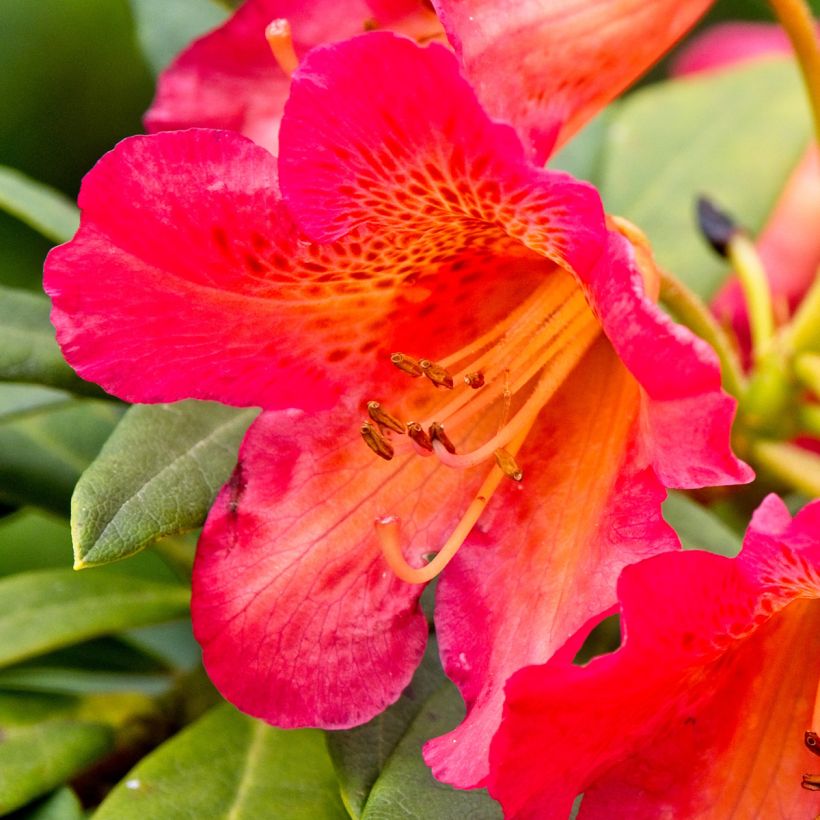

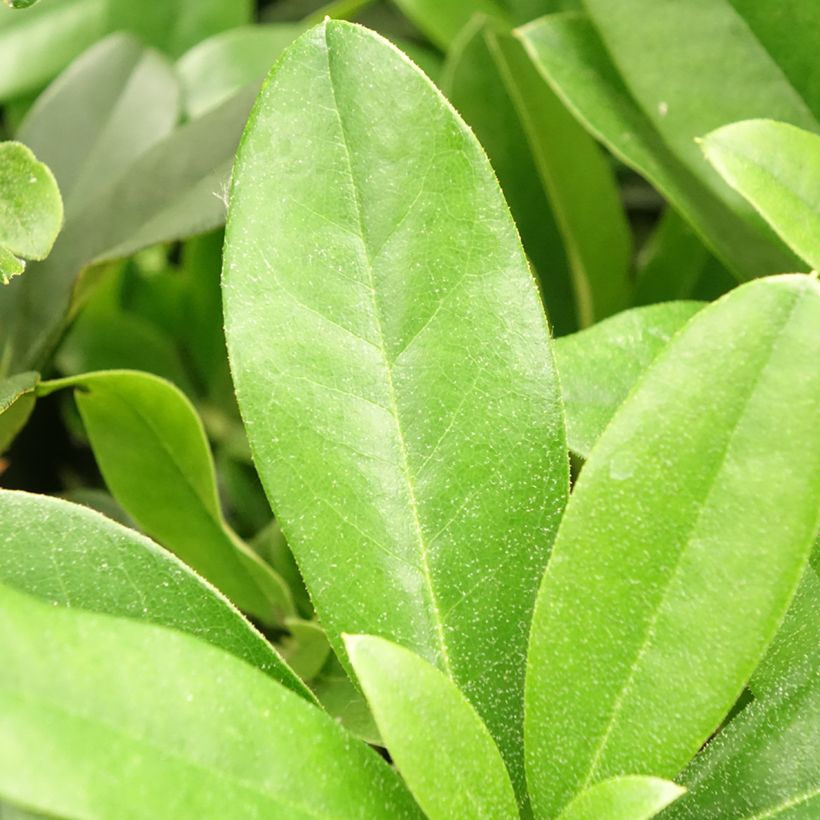

Plant habit
Flowering
Foliage
Botanical data
Rhododendron
Scyphocalyx
Ericaceae
Rhododendron
Cultivar or hybrid
Other Small Rhododendron
Planting and care
Plant the 'Scyphocalyx' Rhododendron in a semi-shaded position, protected from cold and drying winds, in a moist, humus-rich, and light soil with an acidic tendency, free from limestone. Like all ericaceous plants, it cannot tolerate limestone or heavy soils that become waterlogged in winter. If the soil remains moist in summer, this rhododendron can also tolerate non-scorching sunlight. Avoid planting at its base, as its shallow roots do not tolerate competition from other plants, especially for water resources.
Dig a hole three times larger than the pot. Soak the root ball in non-limestone water and plant the bush at the collar level in a mixture composed of leaf compost, gravel or pumice, and loam. Water generously and keep the soil moist in summer. Azaleas and rhododendrons have a shallow root system and therefore fear long periods of drought. That is why it is advisable to enrich the soil with humus and water abundantly during dry periods. Moreover, this root system is not very strong, which is why it is essential to lighten heavy soils with draining materials (gravel, pumice, clay pellets) at planting. Apply a mulch of crushed pine bark around the base of the bush every spring to maintain soil moisture while preserving an acidic pH.
Maintenance consists of removing faded flowers in summer and pruning any dead branches. Azaleas and rhododendrons can sometimes be attacked by weevils that eat the edges of leaves and rootlets, as well as the notorious "rhododendron borer," which does not often cause severe damage. Yellowing of the leaves (chlorosis) in Rhododendron indicates poor assimilation of iron from the soil and premature death of the plant. While limestone is often the cause, poorly drained soil or a deeply planted root ball can also explain the phenomenon.
"Rhodos" thrive in cooler climates, planted in limestone-free soil and in a humid environment. Their cultivation in warmer and drier climates is generally doomed to failure in the long run, despite all attempts to acclimate them.
Planting period
Intended location
Care
This item has not been reviewed yet - be the first to leave a review about it.
Evergreen shrubs
Haven't found what you were looking for?
Hardiness is the lowest winter temperature a plant can endure without suffering serious damage or even dying. However, hardiness is affected by location (a sheltered area, such as a patio), protection (winter cover) and soil type (hardiness is improved by well-drained soil).

Photo Sharing Terms & Conditions
In order to encourage gardeners to interact and share their experiences, Promesse de fleurs offers various media enabling content to be uploaded onto its Site - in particular via the ‘Photo sharing’ module.
The User agrees to refrain from:
- Posting any content that is illegal, prejudicial, insulting, racist, inciteful to hatred, revisionist, contrary to public decency, that infringes on privacy or on the privacy rights of third parties, in particular the publicity rights of persons and goods, intellectual property rights, or the right to privacy.
- Submitting content on behalf of a third party;
- Impersonate the identity of a third party and/or publish any personal information about a third party;
In general, the User undertakes to refrain from any unethical behaviour.
All Content (in particular text, comments, files, images, photos, videos, creative works, etc.), which may be subject to property or intellectual property rights, image or other private rights, shall remain the property of the User, subject to the limited rights granted by the terms of the licence granted by Promesse de fleurs as stated below. Users are at liberty to publish or not to publish such Content on the Site, notably via the ‘Photo Sharing’ facility, and accept that this Content shall be made public and freely accessible, notably on the Internet.
Users further acknowledge, undertake to have ,and guarantee that they hold all necessary rights and permissions to publish such material on the Site, in particular with regard to the legislation in force pertaining to any privacy, property, intellectual property, image, or contractual rights, or rights of any other nature. By publishing such Content on the Site, Users acknowledge accepting full liability as publishers of the Content within the meaning of the law, and grant Promesse de fleurs, free of charge, an inclusive, worldwide licence for the said Content for the entire duration of its publication, including all reproduction, representation, up/downloading, displaying, performing, transmission, and storage rights.
Users also grant permission for their name to be linked to the Content and accept that this link may not always be made available.
By engaging in posting material, Users consent to their Content becoming automatically accessible on the Internet, in particular on other sites and/or blogs and/or web pages of the Promesse de fleurs site, including in particular social pages and the Promesse de fleurs catalogue.
Users may secure the removal of entrusted content free of charge by issuing a simple request via our contact form.
The flowering period indicated on our website applies to countries and regions located in USDA zone 8 (France, the United Kingdom, Ireland, the Netherlands, etc.)
It will vary according to where you live:
- In zones 9 to 10 (Italy, Spain, Greece, etc.), flowering will occur about 2 to 4 weeks earlier.
- In zones 6 to 7 (Germany, Poland, Slovenia, and lower mountainous regions), flowering will be delayed by 2 to 3 weeks.
- In zone 5 (Central Europe, Scandinavia), blooming will be delayed by 3 to 5 weeks.
In temperate climates, pruning of spring-flowering shrubs (forsythia, spireas, etc.) should be done just after flowering.
Pruning of summer-flowering shrubs (Indian Lilac, Perovskia, etc.) can be done in winter or spring.
In cold regions as well as with frost-sensitive plants, avoid pruning too early when severe frosts may still occur.
The planting period indicated on our website applies to countries and regions located in USDA zone 8 (France, United Kingdom, Ireland, Netherlands).
It will vary according to where you live:
- In Mediterranean zones (Marseille, Madrid, Milan, etc.), autumn and winter are the best planting periods.
- In continental zones (Strasbourg, Munich, Vienna, etc.), delay planting by 2 to 3 weeks in spring and bring it forward by 2 to 4 weeks in autumn.
- In mountainous regions (the Alps, Pyrenees, Carpathians, etc.), it is best to plant in late spring (May-June) or late summer (August-September).
The harvesting period indicated on our website applies to countries and regions in USDA zone 8 (France, England, Ireland, the Netherlands).
In colder areas (Scandinavia, Poland, Austria...) fruit and vegetable harvests are likely to be delayed by 3-4 weeks.
In warmer areas (Italy, Spain, Greece, etc.), harvesting will probably take place earlier, depending on weather conditions.
The sowing periods indicated on our website apply to countries and regions within USDA Zone 8 (France, UK, Ireland, Netherlands).
In colder areas (Scandinavia, Poland, Austria...), delay any outdoor sowing by 3-4 weeks, or sow under glass.
In warmer climes (Italy, Spain, Greece, etc.), bring outdoor sowing forward by a few weeks.

































